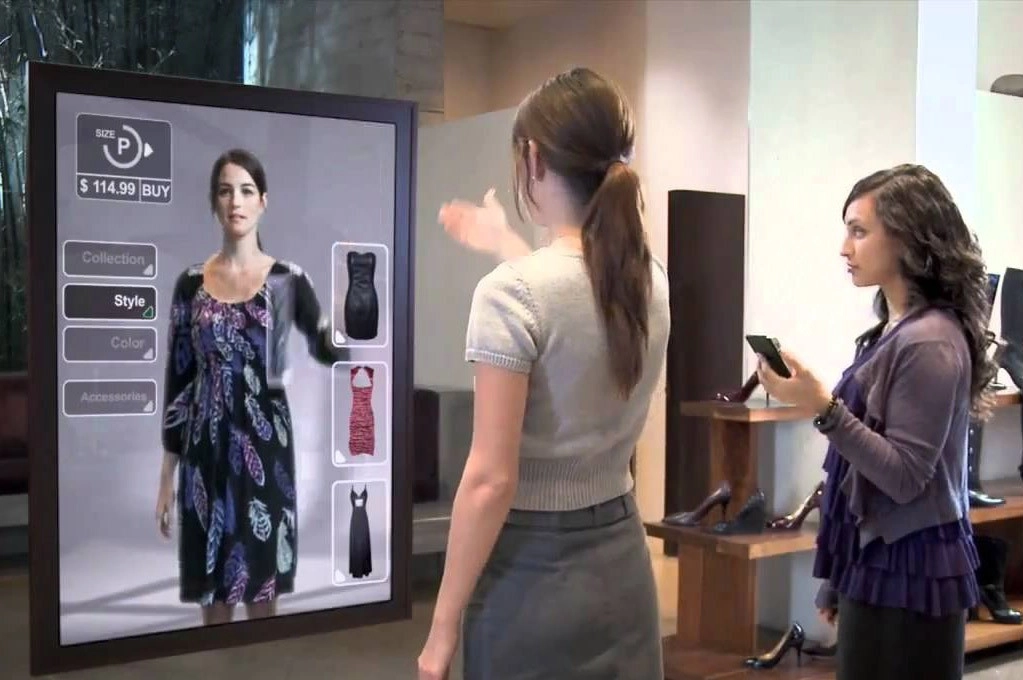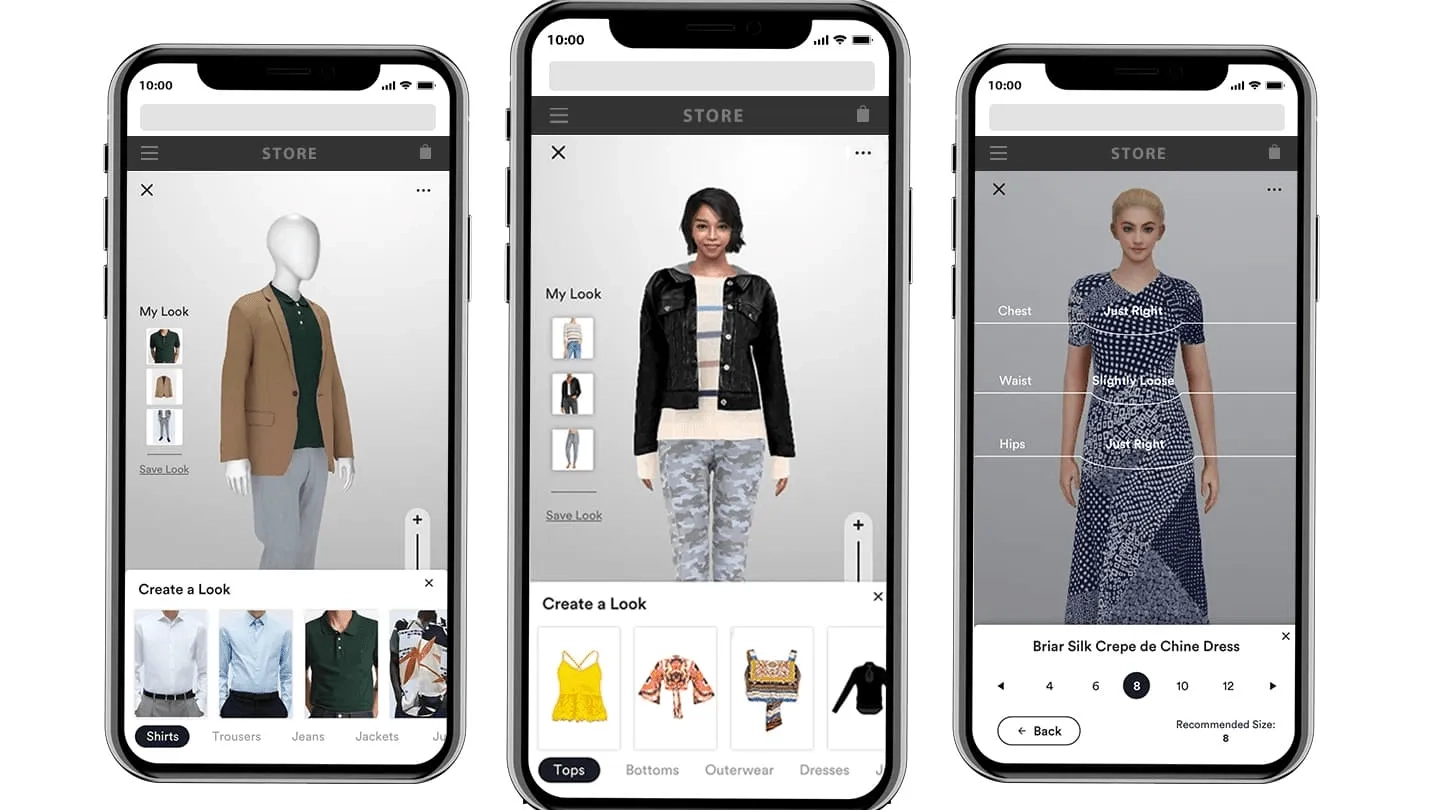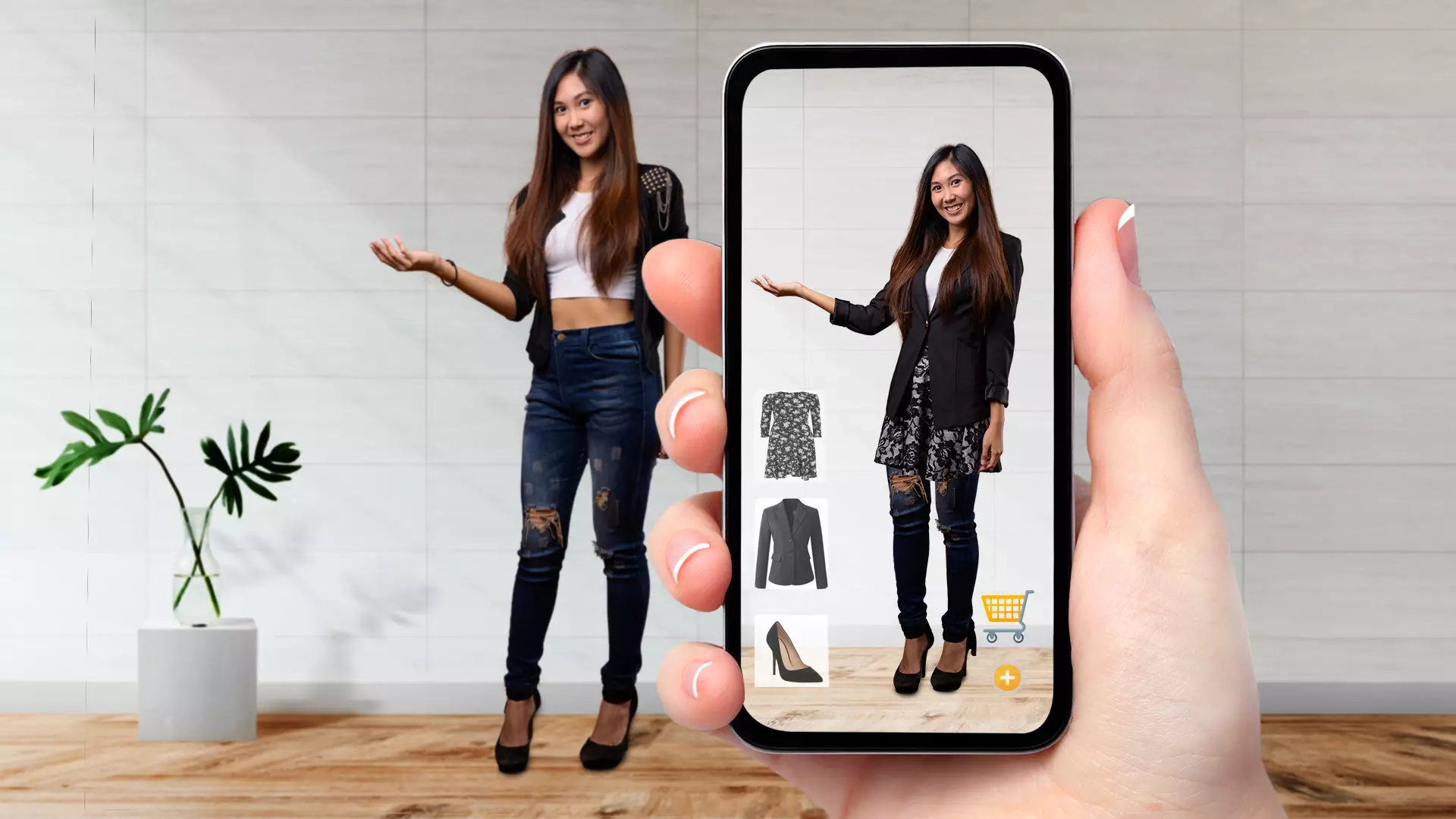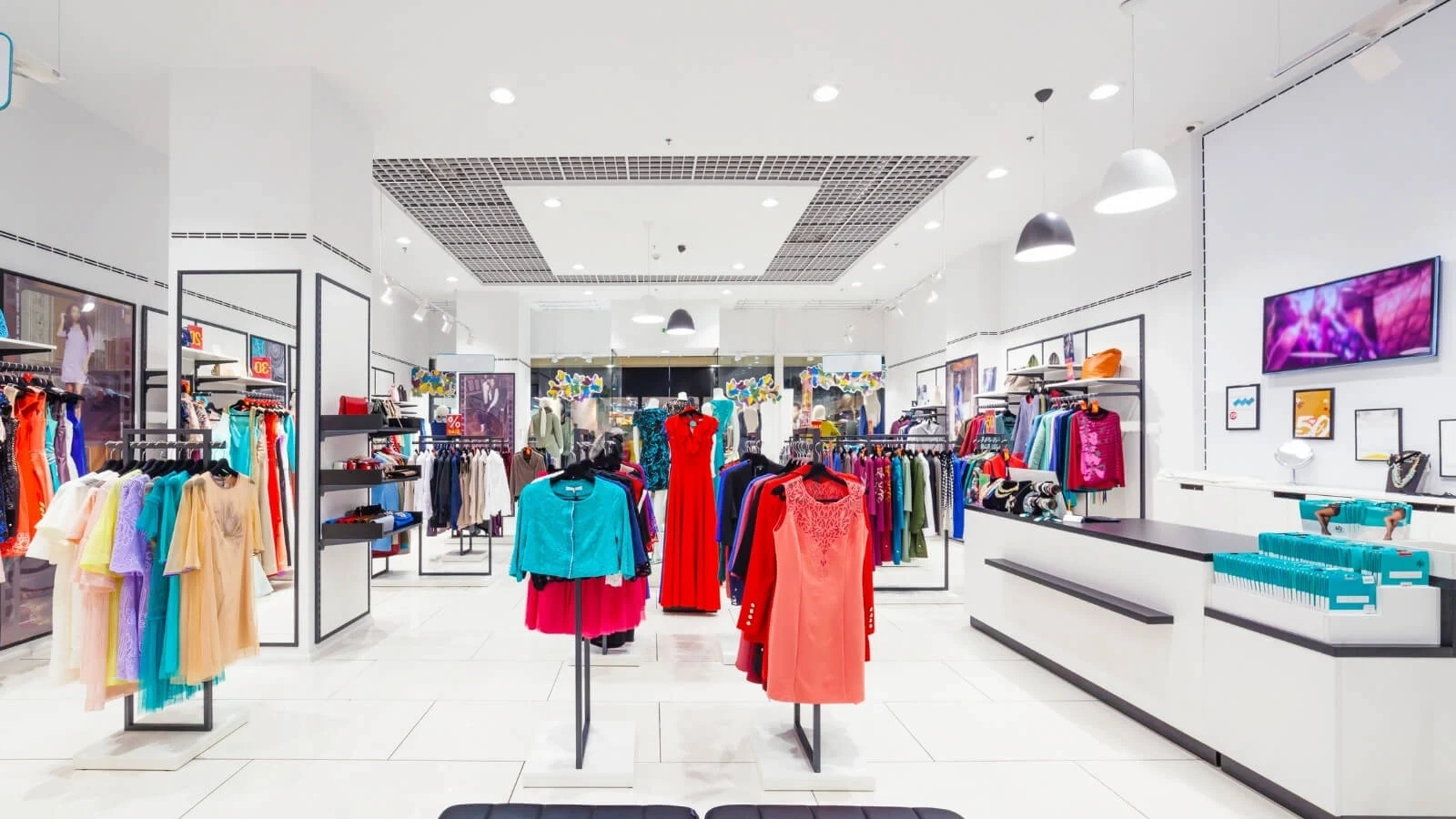How AR and VR are Redefining the Fashion Industry 2024
13/05/2024 2024-05-13 17:23How AR and VR are Redefining the Fashion Industry 2024
Introduction
The fashion industry is constantly changing and is an area for technological innovation that has existed for a while. Fast forward to the industrial revolution that broke up from handcrafted garment production to the digital age that has caused online shopping, fashion design has gone through many traces of evolution. In the digital era, two technologies stand out for their transformative potential: The technological advancements of Augmented Reality (AR) and Virtual Reality (VR). These virtual technologies are not only changing the way we experience fashion but also making a radical change in the way brands interact with consumers and create products. In this blog, we will see how AR and VR suggest new meanings in fashion, elevate the previous shopping experience, and mold the fashion industry’s future.
What is AR in the Fashion Industry
- Virtual Try-On: AR customers can try various clothes and get-ups by putting on the items without handling the original items. By using AR applications, users can get a real-time view of how a garment or accessory looks on them through their smartphones or any other similar device. This technology eliminates physical fitting rooms and elevates the shopping experience with technology; shoppers do not have to try clothes on but gain any information they need to help them make the right purchasing decision.
- Product Visualization: AR assists traders in the fashion market segment. Brands can create virtual products that match the clients’ styles by employing mobile applications or AR-enabled devices. Digital content is processed so that it is overlaid on the physical world. This improves product visualization, and customers can easily make the purchasing decision.
- Personalization: A great feature of AR in fashion technology is that it simplifies shopping, as it can show you products that suit your preferences and products that you have previously bought. Examining the market data that comprises body measurements, style preferences, and browsing behavior, brands can offer personalized styling tips and product suggestions, thus increasing customer satisfaction and loyalty.
- Brand Engagement: AR experiences can be employed to involve customers in unique and unforgettable ways, such as interactive virtual fashion shows, AR-powered marketing campaigns, and gamified shopping. By providing innovative brand experiences, companies may raise the level of involvement from consumers and widen the gap between themselves and their competitors.
What is VR in the Fashion Industry
- Immersive Shopping: VR in fashion technology allows customers to visit virtual stores and see product collections fully immersively. Customers can roam virtually through showrooms, interact with virtual assistants like salespersons, and flip through products like in a physical store. VR enhances retail stores with a feel of presence and immersion that cannot be replicated through shopping online in traditional ways.
- Virtual Fashion Shows: Virtual reality allows brands to host virtual fashion shows and events that are worldwide accessible, overcoming the limitations of physical venues. Digital fashion shows will give viewers a first-hand experience of the upcoming collections vividly and interactively, which will translate to greater consumer attention to the brand.
- Training and Design: VR can also be utilized in the training processes, where designers and store retail staff can easily view various 3D models of products, store layouts, and merchandising displays in a virtual world. VR-based design tools facilitate the designers’ design of virtual prototypes and experimentation with different designs and materials in a virtual world, thus streamlining product development and reducing the time to market.
- Enhanced Brand Experience: VR-powered experiences are instrumental in creating unique brand activations and pop-up stores that connect customers with the brand unforgettably and interactively. VR can be used in many ways, such as outdoor pop-ups in physical locations where customers can experience it or branded VR experiences that people can access 24/7 from everywhere in the world. With this technology, brands can build long-lasting customer connections and boost brand loyalty.
Enhancing the Shopping Experience with AR
In the fashion industry, shopping experiences with AR technology can be used. Customers usually can not replicate the feeling of a shopping store product touch, trying on, or kinesthetic shopping in standard eCommerce platforms. Nevertheless, what is missing in VR is the ability to do a virtual try-on without leaving your place.
Let’s take an online general store as an example and think how beautiful it would be if you could check the appearance of a particular garment on yourself without even going to the dressing room. Mirror in virtual reality powered by AR does precisely that: it lets shoppers see themselves wearing different clothes in real-time. We can also expand this by adding that whether it’s sunglasses on makeup looks or the latest hairstyles that one wants to try, AR is there to give the purchaser a clear idea of what to choose.
Additionally, the hologram system is not only used by individual shopping; many areas of the same system can also be used. Some companies have AR technology in their physical stores and have developed interactive displays and installations that make it impossible to tell whether it is a digital or physical world. This non-traditional retail format engages in customer flow and allows store visitors to have a personalized shopping experience.
Personalization and Customization with VR
AR inspires the purchasing process by virtually embedding computer-generated information into the physical world, but VR transcends time and space limitations and places users in the digital milieu as if they were real. In the world of fashion, VR is shaking the ground for brands to shift towards personalization and customization.
Furthermore, the garment that fitted the customer was made to fit the customer. Before this, the bespoke was confined to the few people with time and money for the gorgeous things. Nevertheless, VR is the one that is democratizing customization by ensuring that customers can design their attire virtually. Moreover, these customers can visualize their clothes in a virtual space. It is through the selection of fabrics and colors to the adjustments of measurements and styles that VR enables people to design clothes that are personal to them and represent their tastes and preferences.
Personalization and customization with VR technology allow brands to present their collections in as immersive fashion shows as possible. Consumers enjoy virtual reality headsets as a form of media, where they themselves get to set the directions of fashion events, getting the sensation of actually being present on the runway. This not only increases the size of fashion events but also intensifies the audience’s interaction and feelings.
Integration with Social Media
Social media platforms have also adopted AR and VR, making the difference between the physical and the digital worlds more ambiguous. Social media, including filters and lenses generated by AR technology, allows users to experiment with virtual makeup, accessories, and outfits, posting the content to social media. Brands have been utilizing these features to increase the effectiveness of their social media strategies, raise users’ engagement levels, and make their products more enjoyable through interaction all at the same time. Through the combination of ar and vr with social media platforms, brands can deliver their message to more people and create brand experiences that the consumers remember.
AR and VR for a More Sustainable Future
The fashion industry, among other things, faces sustainability challenges in the production of 3D digital 360 AR or VR experiences. This provides options that can result in a new eco-minded future.
- Reduced Sample Production: Traditionally, designers made physical samples for every design iteration of a garment. VR allows them to experiment and adjust the clothes in the virtual world, which plays an insignificant role and reduces production costs.
- Informed Purchasing Decisions: AR filters can showcase products’ roots and materials, giving consumers an opportunity to decide whether to purchase products that align with their values.
- Virtual Shopping, Reduced Emissions: VR shopping can reduce carbon footprints by eliminating visits.
Benefits of AR & VR in the Fashion Industry
Augmented Reality (AR) and Virtual Reality (VR) technologies are the technologies that have many benefits for the fashion industry; they are the technologies that are changing the way brands engage with consumers and the face of retailing. There are many technological inventions of the computerized tagging of garments called as “VF” and Virtual Reality and Augmented Reality that give a more engaging form in which virtual try on, interactive product visualization, and Virtual fashion show is done to make the connection of audience in a deeper manner. These technologies facilitate personalized shopping due to their compatibility with individual choices and previous buying habits while at the same time offering the luxury of convenience and accessibility by home shopping anytime and from anywhere using smartphones or other devices.
Moreover, the benefits of ar and vr in the fashion industry simplify many things in the fashion retail experience process, resulting in cost and time savings through virtual prototyping, marketing, and sales. More and more fashion companies are recognizing the potential of innovation, such as virtual technologies, and are beginning to take advantage of them. In this particular case, fashion brands can draw attention to and differentiate themselves from the crowd. They can make progress on sustainability issues through virtual experiences and minimize the number of physical prototypes and samples needed. In general, AR & VR provide the fashion market with innovative solutions, transforming old-fashioned retail stores into the most advanced ones and giving brands a chance to catch customers’ attention in the digital era.
Challenges and Considerations
ar and vr in the fashion industry offers a lot of potential, but some aspects should also be considered. It is necessary to make the technology accessible and affordable to consumers and brands. Data privacy and security issues related to virtual try-on experiences should be resolved. On top of this, the touch and feel of the material and the originality of human interaction within physical shops are unique elements that shops will continue offering.
The Future of Fashion
The future of the fashion industry and AR/VR is going to be even more amazing as technology is improving day by day. From organized holographic shows and digital brand experiences to machine learning-driven personal shopping assistants and interactive displays, no limit holds the fashion world. With online and digital platforms now the standard for shopping and engagement, brands must keep developing and refreshing how they deliver their products/services to align with customer needs/preferences. Fashion brands can create incredibly engaging and memorable experiences by using AR and VR. These experiences will make a lasting impression on consumers and will be a critical factor in the success of the brands in the digital age.
In conclusion, AR and VR enable the fashion industry to enter a new era since they fundamentally change the connection between consumers and brands. Virtual try-on and immersive shopping experiences, personalized recommendations, and sustainability initiatives are all being used already in the retail industry, and these technologies are changing everything from how we shop to how we are being recommended. The future of fashion will take on more customized, engaging, and sustainable character as more brands increasingly adopt augmented reality (AR) & virtual reality (VR) as essential elements of their digital strategy.
FAQs
- Will customers be able to conveniently try clothes on virtually before an online shopping experience sale by using virtual changing rooms?
Yes! With the convenience of AR technology on your smartphone or other device, you can virtually try on clothes, eliminating the need for a physical fitting room. This not only accelerates the online shopping experience with the AR process but also provides a sense of assurance.
- Placing customers in an interactive and immersive shopping environment raises a question about VR’s potential in changing shopping procedures.
Through VR, you can visit stores and showrooms in a virtual way, browse collections in a fully immersive way, and even communicate with virtual assistants. This can, in a way, reflect the real-time shopping process that you would encounter in traditional shopping, along with your involvement, thus fulfilling your most likely expectations.
- For example, how and in which ways can AR and VR help fashion brands?
AR and VR can personalize customers’ shopping experiences, organize virtual fashion shows, and reduce the costs of sample production. They can also be employed in product presentations and promotional activities with emotional content and plot twists.
- Discuss that it can not be true that AR and VR are bad for the environment.
While it’s true that some sustainability concerns exist with AR and VR, these technologies also offer significant environmental benefits. Consider virtual try-ons that could drastically reduce returns and VR shopping that eliminates the need for physical store visits, thereby reducing carbon dioxide emissions.
- As new technologies continue to shape the fashion world, what will follow for AR and VR shortly is anyone’s guess.
The future of fashion technology is very inspiring! These things you should expect to find in the future include highly interactive shopping, 3D fashion shows, and recommendations powered by machine learning. AR and VR are two aspects that will benefit the fashion industry in the time ahead.



















